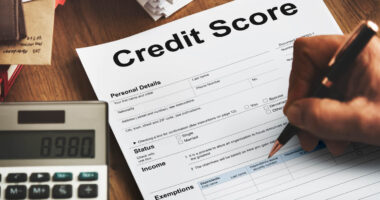Credit isn’t one-size-fits-all. Depending on your goals—whether you want to buy a car, purchase a home, fund education, or simply build your credit history—different types of credit may be better suited for your situation. Understanding the main categories of credit helps you choose the right option and use it wisely to build your financial future.
The Two Main Types of Credit
Credit generally falls into two broad categories: revolving credit and installment credit. Both are useful, but they work in different ways.
1. Revolving Credit
Revolving credit gives you a set credit limit that you can borrow from, repay, and borrow again. As long as you stay within your limit and make payments, the account remains open.
Examples of revolving credit:
- Credit Cards – The most common form, offering flexibility and sometimes rewards like cashback, points, or travel miles.
- Store Credit Cards – Cards tied to specific retailers, often with discounts or promotions.
- Personal Lines of Credit – Similar to a credit card but issued by a bank, offering access to cash for unexpected expenses.
- Home Equity Lines of Credit (HELOCs) – A revolving line secured by your home’s equity, often used for renovations or debt consolidation.
✅ Best Use: Covering variable expenses, earning rewards, or managing short-term cash flow.
⚠️ Watch Out: Carrying a balance and paying only the minimum can lead to high-interest debt.
2. Installment Credit
Installment credit involves borrowing a fixed amount and repaying it in equal monthly installments over a set period. Once the loan is paid off, the account is closed.
Examples of installment credit:
- Mortgages – Long-term loans used to purchase homes or property.
- Auto Loans – Financing vehicles, typically repaid over 3–7 years.
- Student Loans – Funding education costs with repayment beginning after graduation (in most cases).
- Personal Loans – Unsecured loans for debt consolidation, medical bills, or large purchases.
- Credit-Builder Loans – Small loans designed specifically to help people build or repair credit.
✅ Best Use: Financing large, one-time purchases that you repay steadily over time.
⚠️ Watch Out: Missing payments can harm your credit score and risk repossession (in the case of mortgages or auto loans).
Secured vs. Unsecured Credit
Another way to classify credit is by whether it’s secured or unsecured:
- Secured Credit – Backed by collateral (like your house, car, or cash deposit). Examples: mortgages, auto loans, secured credit cards.
- Unsecured Credit – Requires no collateral but usually comes with higher interest rates. Examples: personal loans, credit cards.
✅ Tip: Secured credit is easier to qualify for if you’re just starting out or rebuilding your score.
Which Type of Credit is Right for You?
The best type of credit depends on your financial goals:
- Want to build credit? Start with a secured credit card or credit-builder loan.
- Need flexibility? Consider a credit card or personal line of credit.
- Buying a home or car? Installment loans like mortgages or auto loans are the way to go.
- Consolidating debt? A personal loan or balance transfer card can help lower interest rates.
Bottom Line
Credit comes in many forms, but all of them impact your credit history and credit score. By understanding the differences between revolving and installment credit—and between secured and unsecured options—you can choose the type that best supports your goals.
Use credit responsibly, and it becomes more than a borrowing tool—it becomes a foundation for financial growth and future wealth.








